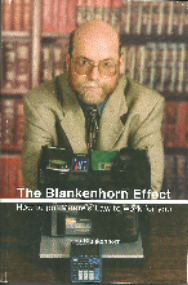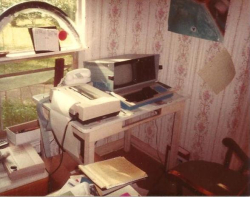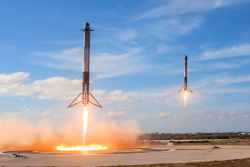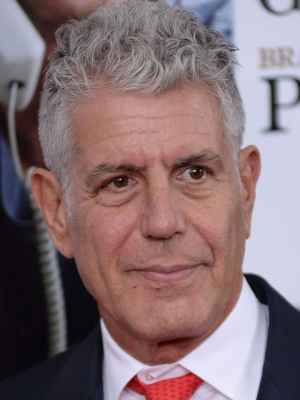 Almost 20 years ago I began the most important work of my career.
Almost 20 years ago I began the most important work of my career.
My working title was "Moore’s Lore,” stories about Moore’s Law. A "marketing expert" insisted I put my name in the title.
The original Moore’s Law, described by Intel co-founder Gordon Moore for Electronics magazine in 1965, estimated that circuit density could increase for 10 years, at the same cost, and indeed by 1975 Intel was shipping chips that had over 64,000 circuits on them. Moore then “formalized” the law, saying he expected density to continue doubling, at the same pace, for as far as he could foresee.
That’s Moore’s First Law. Moore never mentioned a second law, but it’s there.
Moore’s Second Law is that just as circuit complexity grows exponentially, so does its capital cost. While you can make up this cost by making more chips, it means the chip-making business is consolidating. Today there are only four manufacturers of microprocessors – Samsung, China’s Taiwan Semiconductor, the Middle East’s Global Foundries, and Intel itself.
The implications of Moore’s Second Law, as it continues grinding down, is that chip production becomes a national security issue.
Ever since Moore’s 1965 article came out, cynics have been trying to call a halt to Moore’s Law. As circuit lines get close together their distance can’t be measured, the cynics note. Every increased expense or shortfall in decreasing circuit size is seen to be evidence that the “Law” is “ending.”

Who cares how much faster the PC I’m typing on is compared to one produced in 2001. The main hard drive no longer has any moving parts, it’s connected to the Internet at speeds up to 100 megabytes per second, and behind that Internet are cloud networks that run even faster. User interfaces have shrunk to finger-sized, and improved usability has eliminated the need for instructions. Computing is now a visual medium. It’s a wireless medium. That iPhone in your hand holds more raw computing power than the average data center did in 2001.
All of this brings me to what I’m now going to call Moore’s Third Law, written into the 2010 book’s title, “Better and better goes faster and faster.”
Moore’s Third Law is that change is constantly accelerating.
I’m not just talking about computer design. I’m talking about all kinds of change.

That’s about to change.
When Moore was writing, mechanics were the thing. My great-uncle was still working then. Like Moore he carried a protractor and a slide rule to work with him. Manufacturing productivity was still rising, but the pace was slowing, and the new resource era would redistribute wealth upward, toward the needs of capital, rather than creating it through mass employment.

Today, thanks to Moore’s Third Law, the economics of resources is being replaced by the economics of human capital. A computerized society depends on high quality human capital to grow. Human capital means trained, engaged, passionate minds are where the money is. Two decades ago Richard Florida called these people the Creative Class, but their power is only possible because Moore’s Law magnifies it.
Trump is the last, dying resistance to this change. Trumpistan is wedded to mercantilism, the defining political model of the Nixon Era. He gives lip service to manufacturing, the economic model that ruled from the Great Depression until the Arab Oil Embargo in 1973.

Trumpistan is doomed.
But there are other, even bigger changes coming. A global cloud makes distances irrelevant. Self-driving cars make commuting times irrelevant. Robotic manufacturing and warehousing make low-skill labor irrelevant. Renewable energy will make all alternatives obsolete, and slow global warming.
Cloud networks are making DNA into a programming language and making a longer lifespan something you can buy. Until these solutions scale, the cost of that longer life will rise to infinity, and beyond, because most people don’t want to die until they do. But scaling the solutions means your grandchildren will make that choice for themselves.

Moore’s Law is creating an excess of capital, and of labor, along with the need for both financial and human capital to focus on new challenges. The necessities of life are coming within reach of most people, and what do we want then? How will we choose? “Poor man wants to be rich, rich man wants to be king, and a king ain’t satisfied until he rules everything,” Bruce Springsteen wrote in Backstreets. Will this define our choices? Or will We, the People, make these choices in our slow, messy, democratic way?
These are becoming key questions for the world, but the questions will keep changing as Moore’s Law continues to accelerate. It will accelerate.
We’re not ready for it, for any of it, but ready or not here we go.











Nice Article. Bookmarked! The laws can also be applied to electrical conductivity of turbines, to generate electricity.
Nice Article. Bookmarked! The laws can also be applied to electrical conductivity of turbines, to generate electricity.
Technology goes in every direction. Clouds let us reinvent our world, designing efficient solar systems, new kinds of wind turbines, and more efficient batteries.
There is no energy shortage.
Technology goes in every direction. Clouds let us reinvent our world, designing efficient solar systems, new kinds of wind turbines, and more efficient batteries.
There is no energy shortage.
Moress third law is really great!
Moress third law is really great!
loved your ideas great work
loved your ideas great work
I love the way you write and share your niche! Very interesting and different! Keep it coming! bobs burgers season 9
I love the way you write and share your niche! Very interesting and different! Keep it coming! bobs burgers season 9
i request to look into type of marriages in pakistan that are occuring due to Latest Mobile Phones
i request to look into type of marriages in pakistan that are occuring due to Latest Mobile Phones